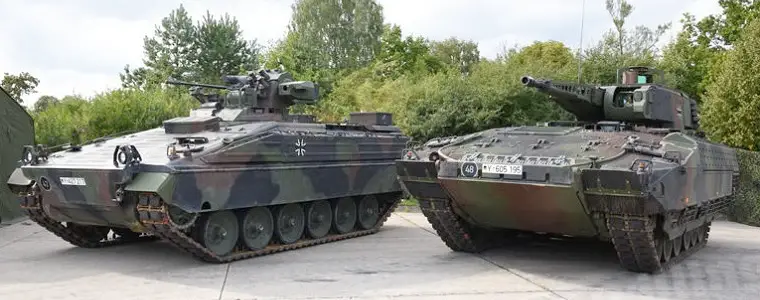Germany is having difficulty preparing for the shipment of forty Marder infantry fighting vehicles (IFVs) to Ukraine, as was initially promised by the German government, according to an article published in Der Spiegel. In December, Frontier India reported that Germany had planned to rely on Marder IFVs after Puma IFVs developed technical issues before their deployment to the NATO rapid response force.
According to the report, which cites sources from Germany’s military, political, and technical circles, the authorities of the republic “cannot provide a clear response” regarding how they plan to locate and prepare 40 Marder infantry fighting vehicles for shipment to Ukraine by March 31, 2023. The report notes that the German military, political, and technical circles are the sources. According to documents that were made public this week by the German Ministry of Defense, the governing bodies of the republic have expressed an interest in carrying out these preparations with the assistance of “both industrial reserves and the Bundeswehr.”
In particular, the defence production company Rheinmetall, which was engaged in manufacturing these military vehicles, has only sixty decommissioned Marder units whose upgrading “cannot be performed within the government-specified time limit.” As a result, the “great majority” of the infantry fighting vehicles in Germany will have to be transferred from among the units of military equipment that are currently “in duty with the Bundeswehr.”
In addition, representatives of the German armed forces have pointed out that just 62 per cent of the 370 Marder BMPs that are available to the German military are in a state that is ready for deployment. According to the report, roughly sixty units are in such a state of disrepair that they are “used as a source of replacement components.”
The report is at odds with a previous Spiegel report. About four days ago, Spiegel reported that the amount is still under discussion and ranges between 20 and 40 units. As the Rheinmetall has a considerable quantity of repaired and prepared machinery, deliveries may be done quickly.
It was reported in September that Rheinmetall had refurbished 16 Marder at its own expense for Ukraine, but the German government delayed the supplies. However, the concern continued to rectify the IFVs and discussed the repair of 14 more units. It was reported that Rheinmetall would prepare for the delivery of seventy combat vehicles from outdated stockpiles.
Even earlier, in April 2022, it was reported that Rheinmetall requested to sell one hundred Marders. At that time, the first five infantry fighting vehicles were ready for delivery.
Following telephone conversations between US Vice President Joe Biden and German Chancellor Olaf Scholz on January 5, the parties issued a joint statement in which they stated that the United States administration intends to provide Ukraine with Bradley infantry fighting vehicles and Germany with Marder infantry fighting vehicles. Additionally, it was revealed that both countries intend to train Ukrainian personnel to run their respective systems.
Even when combined with American Bradley IFVs, the quantity of Marder IFVs and Bradley IFVs is insufficient to meet Ukraine’s requirements, so their presence will have little effect on the situation. However, these are the first armoured combat vehicles provided by the West. In select parts of the front, however, where intensive fighting occurs, they may play a critical role.

What are Marder IFVs?
The BMP “Marder” layout is intended to provide optimum protection for the crew and troops, as well as the safest and most convenient dismounting and landing in combat conditions.
The Marder, which translates to “marten” in English, is a tracked infantry fighting vehicle that was developed by Rheinmetall in the late 1960s. When it came to their ability to move quickly across difficult terrain, the infantry fighting vehicles adopted by the Bundeswehr temporarily outperformed all other known infantry combat vehicles. Because of these characteristics, it is able to work in conjunction with Leopard tanks as part of a strike force.
The most up-to-date variants come standard with an ATGM, a machine gun, and a cannon measuring 20 millimetres in calibre.
The small 25-ton vehicle, which is capable of reaching speeds of up to 65 kilometres per hour, is not only capable of safely transporting nine soldiers to front positions, but it is also capable of engaging tanks and low-flying targets, such as helicopters.
It is estimated that roughly 2,000 Marders were produced in total. Puma variants have been gradually taking the place of older models of the German army’s combat vehicles since 2010. However, the issues with the Puma IFVs have put a brake on the conversions.
